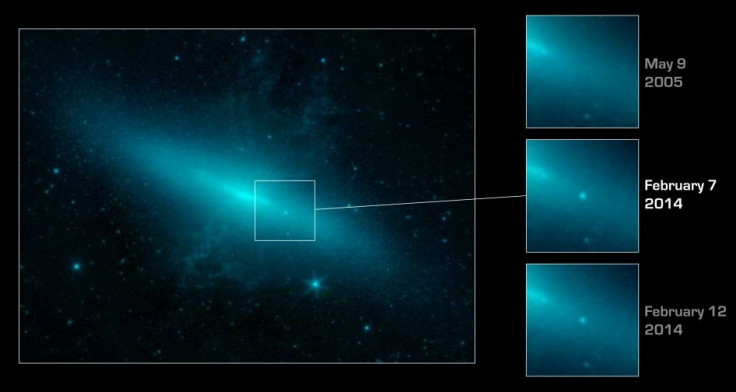NASA’s Spitzer Peers Into The Heart Of The Closest Supernova To Be Discovered In The Last Few Decades

Thanks to its dust-piercing infrared vision, NASA’s Spitzer Space Telescope has managed to peer directly into the center of the aftermath of a stellar explosion, which is considered to be the closest supernova of its kind to Earth, to be discovered in the last few decades.
According to NASA, dust in the supernova's host galaxy M82, also called the “Cigar galaxy,” partially obscures observations by many instruments on Earth and in space. But, Spitzer's sight has allowed it to add to the work of other observatories in producing a complete portrait of the supernova, dubbed SN 2014J.
“At this point in the supernova's evolution, observations in infrared let us look the deepest into the event,” Mansi Kasliwal, the principal investigator for the Spitzer observations, said in a statement. “Spitzer is really good for bypassing the dust and nailing down what's going on in and around the star system that spawned this supernova.”

The SN 2014J, first spotted in the Cigar galaxy on Jan. 21, is a particular kind of supernova known as Type Ia that results in the complete destruction of a white dwarf star -- the small, dense, aged remnant of a typical star like the sun.
Scientists have theorized two scenarios that could give rise to Type Ia supernovas. First, in a binary-star system, a white dwarf’s gravity pulls in matter from its companion star, bulking up on mass until it crosses a critical threshold and blows up. In the second scenario, two white dwarfs in a binary system spiral inward toward each other and eventually collide explosively.
Scientists believe that Type Ia supernovas serve an important role in gauging the expansion of the universe because they explode with almost exactly the same amount of energy while shining with a near-uniform peak brightness. The fainter a Type Ia supernova looks from our vantage point, the farther away it must be.
Referred to as “standard candles,” Type Ia supernovas can help astronomers pin down distances between Earth and nearby galaxies, according to scientists, who also observed that SN 2014J is glowing very brightly in the infrared light from Spitzer, which was able to observe the supernova before and after it reached its peak brightness.
© Copyright IBTimes 2024. All rights reserved.












